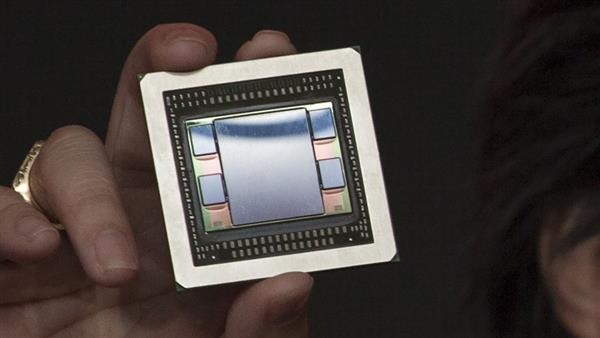
The latest rumors, coming from the ASCII website, indicate that the next professional graphics card AMD Radeon Vega 20 could be a real monster for computational calculation. According to this website, these next cards could be, internally, much smaller than the current Radeon RX Vega, but could potentially rival the current NVIDIA Tesla V100.
As expected, there is a lot of secrecy when it comes to obtaining specific data about the upcoming AMD Radeon Vega 20 graphics. But that has not stopped the ASCII page from daring to calculate the size and possible power of this new model, from some of the photos that there are of the graphical core, and from what we know about the graphic core of the current AMD Radeon RX Vega graphics.
From the photos, this website has been able to calculate that the new graphs would have a die of 360 mm2, in contrast to the 510 mm2 used by the current Radeon RX Vega. That is, a size has been reduced by 30% of the current day. But we can not forget that the 7 nm node of Global Foundries allows inserting up to 2.8 times more transistors per cell. To give you an idea, if we applied it to the current die size of the AMD Radeon RX Vega it would mean that the die would have a size of 720 mm2.
Continuing the comparisons between the core of the next AMD graphics and the current AMD Radeon RX Vega, the ASCII guys have assumed that the computing capacity of the new AMD cards would be 20.9 TFLOPS. As a comparison, the current NVIDIA Tesla V100 "alone" are capable of generating 15,7 TFLOPS. If confirmed, the new AMD Radeon graphics would be the first to break the 20 TFLOPS barrier.
These data, plus the amount of HBM2 memory, which would have increased to 32 GB, make more sense to the rumor that these new graphs would be equipped with the PCIe 4.0 data bus, since the amount of data they would handle would probably be much better than the current AMD Radeon RX Vega.
Of course, what is expected is that the price of these graphics cards is going to be astronomical, mainly due to the difficulties involved in manufacturing at the 7 nm node (which is not expected to reach production maturity until well into 2.019 ). So, we would not expect a specific version to play out of these graphics.
